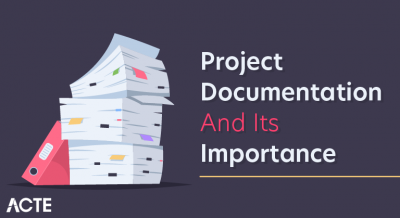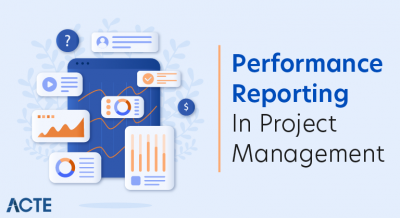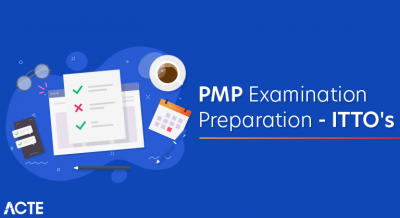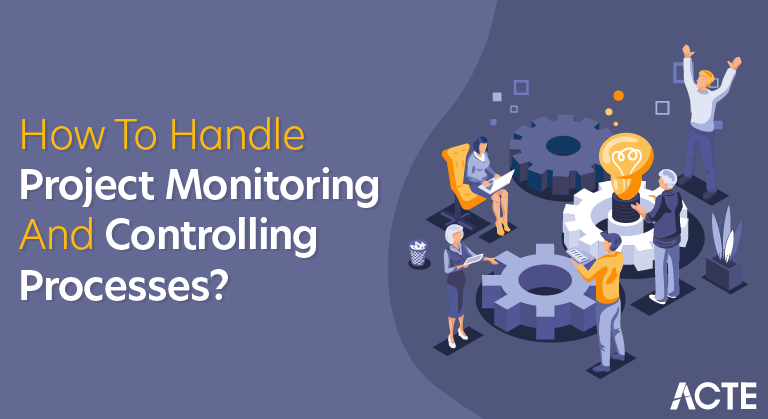
Monitoring and control processes continually track, review, adjust and report on the project’s performance. It’s important to find out how a project’s performing and whether it’s on time, as well as implement approved changes. This ensures the project remains on track, on budget and on time.
Project control
According to the PMBOK® Guide (the Project Management Body of Knowledge), project control is a “project management function that involves comparing actual performance with planned performance and taking appropriate corrective action (or directing others to take this action) that will yield the desired outcome in the project when significant differences exist.”
Essentially, project controls are a series of tools that help keep a project on schedule. Combined with people skills and project experience, they deliver information that enables accurate decision making. The project control process mainly focuses on:
- Measuring planned performance vs actual performance.
- Ongoing assessment of the project’s performance to identify any preventive or corrective actions needed.
- Keeping accurate, timely information based on the project’s output and associated documentation.
- Providing information that supports status updates, forecasting and measuring progress.
- Delivering forecasts that update current costs and project schedule.
- Monitoring the implementation of any approved changes or schedule amendments.
Importance of project monitoring and control
Monitoring and control keeps projects on track. The right controls can play a major part in completing projects on time. The data gathered also lets project managers make informed decisions. They can take advantage of opportunities, make changes and avoid crisis management issues.
Put simply, monitoring and control ensures the seamless execution of tasks. This improves productivity and efficiency.
Monitoring and control method
When setting up a project’s monitoring and control process, first establish the project baselines. This includes the scope, schedule and budget. Use this information to benchmark the project’s progress throughout the lifecycle.
Use a Work Breakdown Structure (WBS) to break a project down into small units of work, or sub-tasks. This makes the work easier to manage and evaluate. This enables easier detection of issues, keeps the project under control and allows for easier progress verification. It also helps prevent team members from feeling overwhelmed.
The 10 Best Practices for Project monitoring and controlling process
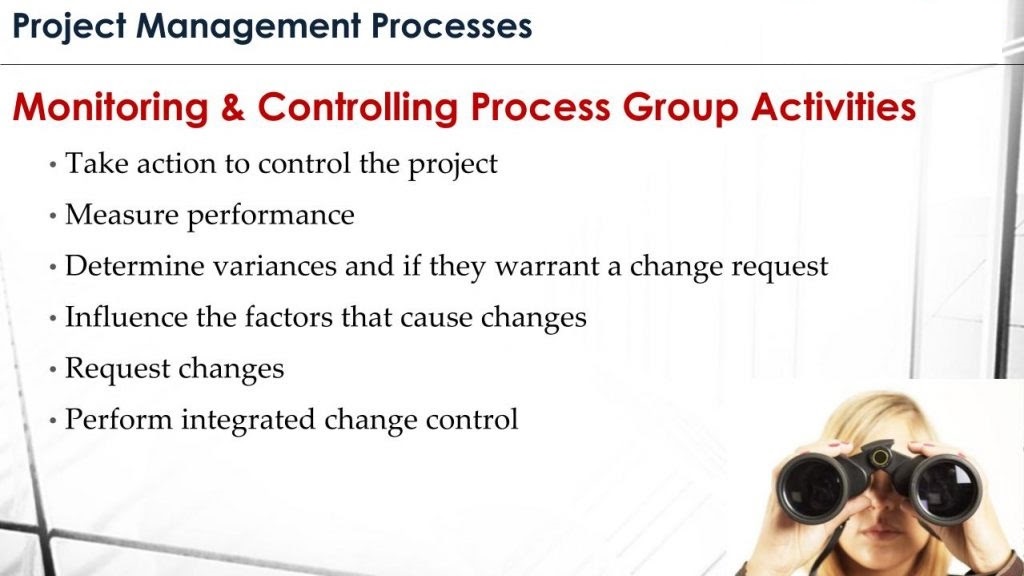
Step 1: Take action to control the project
Necessary steps, control points, and actions are taken to monitor and control the project. These actions provide if the project is deviating from the planned baseline.
Step 2: Measure performance
You should measure the performance in order to check whether the project is going well. For instance, cost performance of the project will give an indication whether the planned budget will be sufficient to complete the project. Schedule performance of the project will give an indication whether the planned schedule and dates can be reached.
Step 3: Determine variances and if they warrant a change request
If there is a lot of variance from the baseline, for instance, if it is expected that the project duration will exceed the planned duration by 20%, then regarding actions must be taken to meet the project targets.
Step 4: Influence the factors that cause changes
Changes are inevitable in a project. But, preventive actions can be taken to influence the factors that cause changes. For instance, a detailed scope and requirement clarification with the customer will reduce the changes that will be coming from the customer.
Step 5: Request changes
If there is a deviation from the planned values, then a change can be requested to meet the planned values again.
Step 6: Perform integrated change control
Changes in a project must be implemented in an integrated manner. Because a small change in one aspect of the project might impact the overall project. Performing an integrated change control evaluates the changes and its impacts on the project. Then, a proper change implementation is planned to minimize the risk of changes.
Step 7: Approve or reject changes
Project monitoring and controlling process may approve or reject changes. Changes are evaluated by the change control board and if this board rejects the change, it won’t be implemented. If a change is approved, project plan revisions must be done and change should be implemented properly.
Step 8: Inform stakeholders of approved changes
If the decision of the change control board is approving a change. This must be communicated to the stakeholders. Because, the previous plan, scope, and targets have a change. So the stakeholders must be notified about this change.
Step 9: Manage configuration
The configuration of a project describes the meaningful and properly working combination of different modules or parts. In order to ensure healthy project progression, the configuration is managed.
Step 10: Create forecasts
Project monitoring and controlling process group activities create forecasts. What will be the budget of the project on completion? What will be the end date of the project if the project performs as it performed till now? These types of forecasts help to see how far the project is from its targets.
Monitor and Control Project Work
Monitoring and Controlling Project Work involves tracking the actual project performance with the planned project management activities. It can mainly be looked as a Control function that takes place at all stages of a project i.e. from Initiation through Closing. For small projects, monitoring and control project work is comparatively an easy task. However, as you are aware, Project Management is more stringently required for large projects where the project manager requires a formal effort to monitor and control how the processes are going. He or she will not be personally involved in performing project work in large projects.
Please note the confusing terms. In the exam, Monitoring and Controlling Project Work may just be referring to the integration process and may NOT be talking about the entire monitoring and controlling process group.
Keeping stakeholders up to date on progress and team performance through reports and on-going documentation contributes to project success. Regularly assessing progress related to scope, benchmark goals, timeline, and budget helps to ensure that there are no unpleasant surprises as the project unfolds.
Some of the outputs of the Monitor and Control Project Work include:
- Change Requests (including CAPA and defect repairs, CAPA – Correct and Preventive Actions)
- Updates to the project management plan
- Updates to project documents
This process of monitoring and controlling project work is extremely important as it can happen that you are able to complete the project on-time, however, have not been able to meet the desired quality levels. Similarly, your project has increased scope, however, have exceeded limits of time and cost. The project manager must balance the requirements of different knowledge areas to control the project through Monitor and Control project work. Project Managers create performance measures or use existing organizational performance measures to identify project performance at regular intervals during the course of the project. Monitoring and Controlling project work involve monitoring any other performance measure that the project manager has created or used for this project.
When you think about monitoring and controlling project work, you should take into consideration that it is measuring against the project management plan.
Monitoring and Controlling Process Project managers using the Project Management Institute’s A Guide to the Project Management Body of Knowledge (PMBOK® Guide) to help add successful infrastructure to their projects can feel more confident about every stage of the process knowing that over 650,000 project managers around the world trust the expert information contained in this best-practice publication.
Among the five process groups detailed in the manual is the “Monitoring and Controlling Process Group” which indicates key elements a savvy project manager should address when overseeing a project that is in its most active state. While all the process groups overlap somewhat and allow for custom tailoring, collectively they serve to elucidate the mystery of what makes great projects work like magic.
The Monitoring and Controlling Process Group addresses the skills needed to review progress and document benchmarks. After initiating, planning, and executing a project, the project is then officially underway though the project manager has been hard at work since the initiation process.
Keeping an eye on team performance and reacting quickly and appropriately to any emergent issues is vital for maintaining positive forward momentum. Re-visiting the previous process groups and making adjustments to the project may be necessary as the project reaches its most active stages. Specifically, a thorough coverage of the necessary tasks in this process group includes:
Perform Integrated Change Control
Even well-planned projects are going to require a change from time to time. The larger the project the more change there usually is. Keeping track of change in light of the timeline and budgetary considerations is an important task that must be addressed. Ongoing documentation and follow-up related to change orders and related costs is an essential part of any project manager’s job.
Verify Scope
As the project progresses through each phase, it is important to secure the documentation related to completed portions of the project. Re-visiting another process groups to be sure that objectives have been met reflecting any changes is part of the follow-through needed as the project continues toward completion.
Control Scope
If there have been adjustments to the budget, timeline, or the desired end-product, it is important to re-visit the documentation related to the scope and mitigate any unresolved challenges. Maintaining effective communication with stakeholders and related constituents will keep everyone updated and engaged in the project’s success.
Control Schedule
Every project has a schedule baseline. As the project progresses adjustments are often necessary to address unforeseen circumstances. Monitoring the project properly can decrease the chances that schedule issues become major setbacks.
Control Costs
Many factors will affect cost throughout the project timeline. Keeping track of any changes in the budget is important so that communication around the control of costs is clear and accurate.


